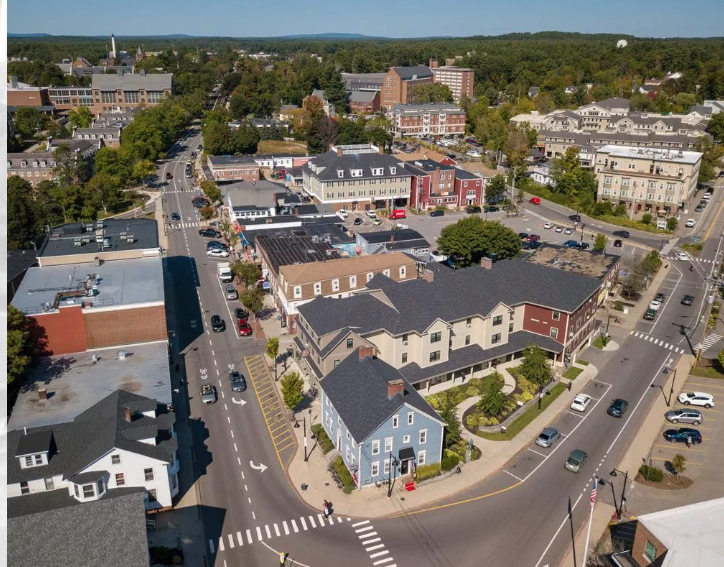Durham Receives $25,000 Grant to Expand Housing
March 30, 2023
DURHAM – The town of Durham was recently awarded a $25,000 Housing Opportunity Planning grant from New Hampshire Housing, which will be utilized in the upcoming year to assess and expand housing opportunities in Durham.
According to Michael Behrendt, town planner, $20,000 will be utilized to hire a consultant to perform a detailed housing needs analysis. Then, in the fall of 2023, a public forum will be held so that community members can add their input in the formation of a new plan to expand housing options in Durham.
Durham’s commitment to expand housing opportunities comes in light of a housing crisis driven by a lack of affordable housing in the state of New Hampshire.
“There’s a housing crisis in New Hampshire now, and a terrible shortage of housing. And all through the state it’s having all kinds of bad repercussions… people can’t afford housing, unless they’re very affluent. There’s a concern about people leaving the state and businesses not being able to find workers,” said Behrendt.
For local and state politicians, changes in zoning ordinances are key to expanding (or limiting) affordable housing. These ordinances, or laws, determine how properties within specific “zones” of a town or city can be utilized. In “single-family” zones, for example, developers are limited to building single-family homes (as opposed to perhaps apartments or townhouses).
Several bills regarding zoning ordinances have been put to a vote by NH lawmakers since the legislature began its session in January. One bill recently passed by the NH Senate will establish millions in appropriations to prevent homelessness and to fund affordable housing. Another, which was voted down earlier this March, would have permitted lots within certain municipalities to be utilized for four-family units in single-family zones.
Will the Zoning Ordinance Change in Durham?
These changes, on the local level as well as the state level, have proved controversial. Last year, the Durham Planning Board proposed several of its own changes to the town’s zoning ordinance which were eventually tabled due to community responses.
“There was a fair amount of objection from the public who thought that the proposed changes were too sweeping, you know, too aggressive in terms of expanding housing,” said Behrendt.
“People are concerned about preserving rural areas, preserving open space, community, character, neighborhood character, you know, and other impacts of increased population and increased density,” he explained.
Behrendt described Durham’s current zoning ordinance as “pretty restrictive.” In most of Durham’s residential zoning districts, only single-family housing is permitted. According to Zillow, the average home value in Durham, NH, is $559,612, and the average rent is $1800 — far from accessible to those with middle to lower incomes.
The Missing Middle
It might seem counterintuitive that as part of the NH’s seacoast, home to young professionals and students, Durham might be so inaccessible. So how did we get here?
“There’s something called missing middle,” Behrendt explained.
Today, it’s more common around the country to see single family housing or large apartment buildings which, while creating many units, are often seen as lacking character — these options present opposite ends of the housing spectrum.
“We used to build a wide range of housing types… duplexes, three families, little clusters of small houses, around one big lot, row houses, accessory dwelling units,” Behrendt said. “There’s a big movement around the country, to encourage more of this missing middle housing.”
The University’s Role in Affordable Housing
The presence of the University of New Hampshire and student housing also provides an obstacle to affordable housing in Durham.
“How do we create apartments that won’t be scooped up by undergraduate students? That’s part of the challenge, because they have more money. I mean, the parents have more money to pay for apartments,” explained Behrendt. “If you have three beds, going at $3,000, there’s not many, you know, single individual families that can afford that unless they’re affluent.”
The only way in which housing projects can legally discriminate is as a carve out for senior citizens. This means that students cannot be turned away as applicants for multi-unit housing, and may end up in the same units as those seeking less costly living options. This often ends up being a detractor for families and young professionals.
“We love our students here in Durham. But occasionally, if you have, like, a house of students in a neighborhood, occasionally, the lifestyles don’t mesh that well,” Behrendt chuckled.
The town planning board, along with its newly hired consultant, will tackle this and the many other complexities of affordable housing opportunities over the coming months as it formulates a new proposal to present to the Durham community this fall.






























